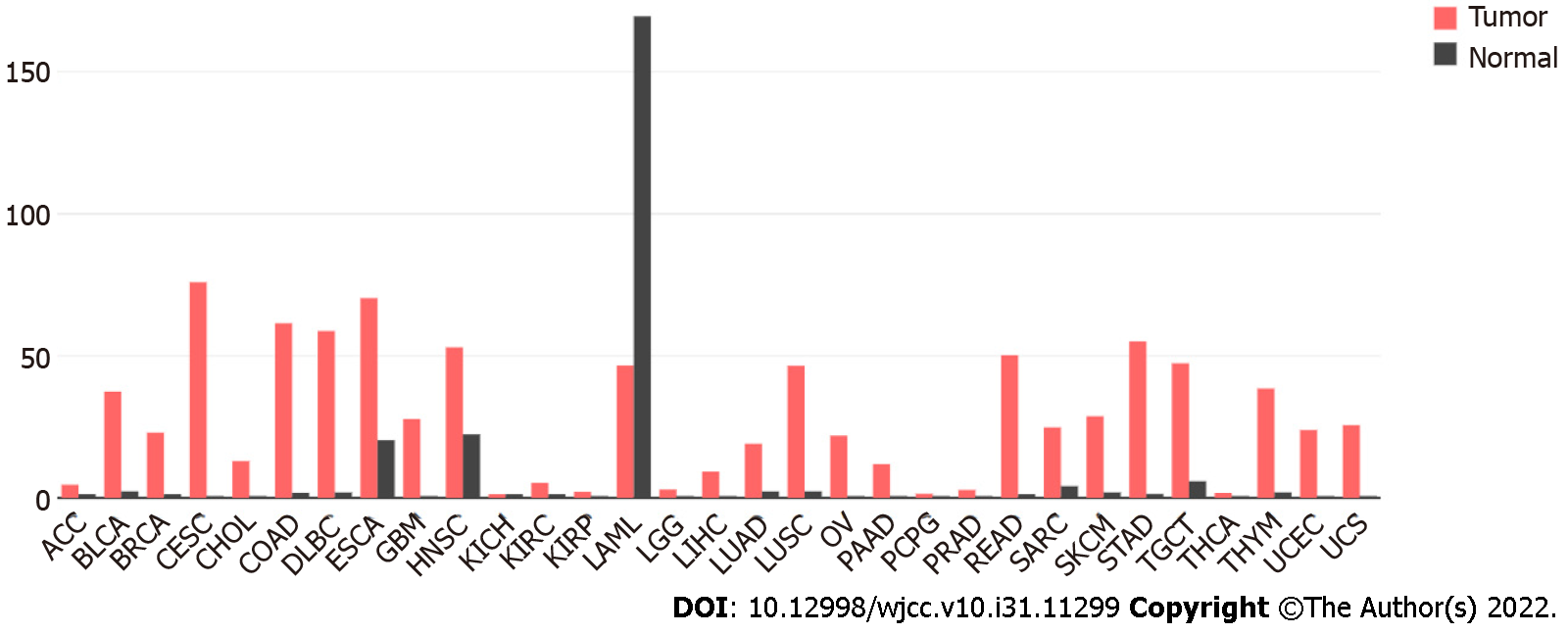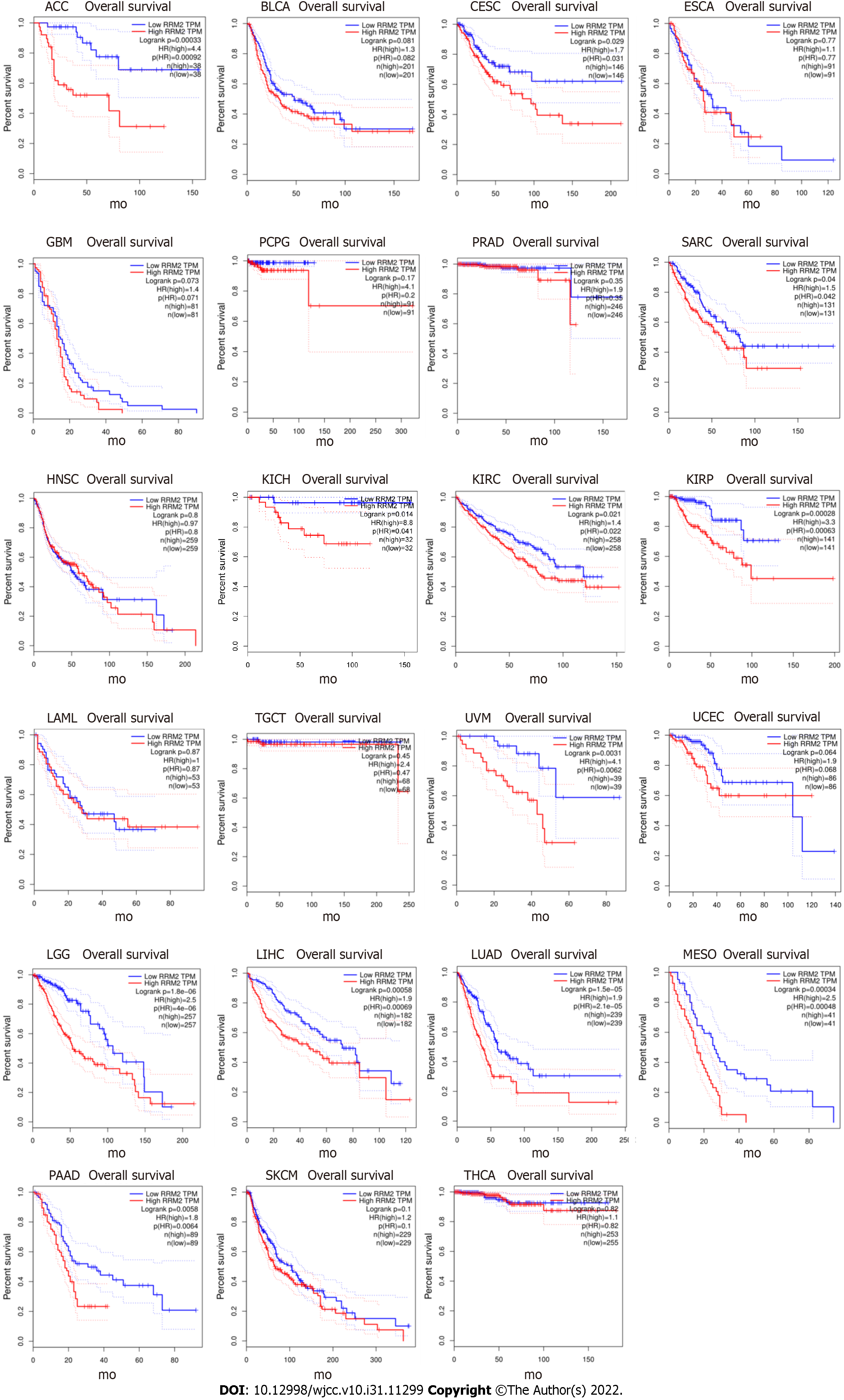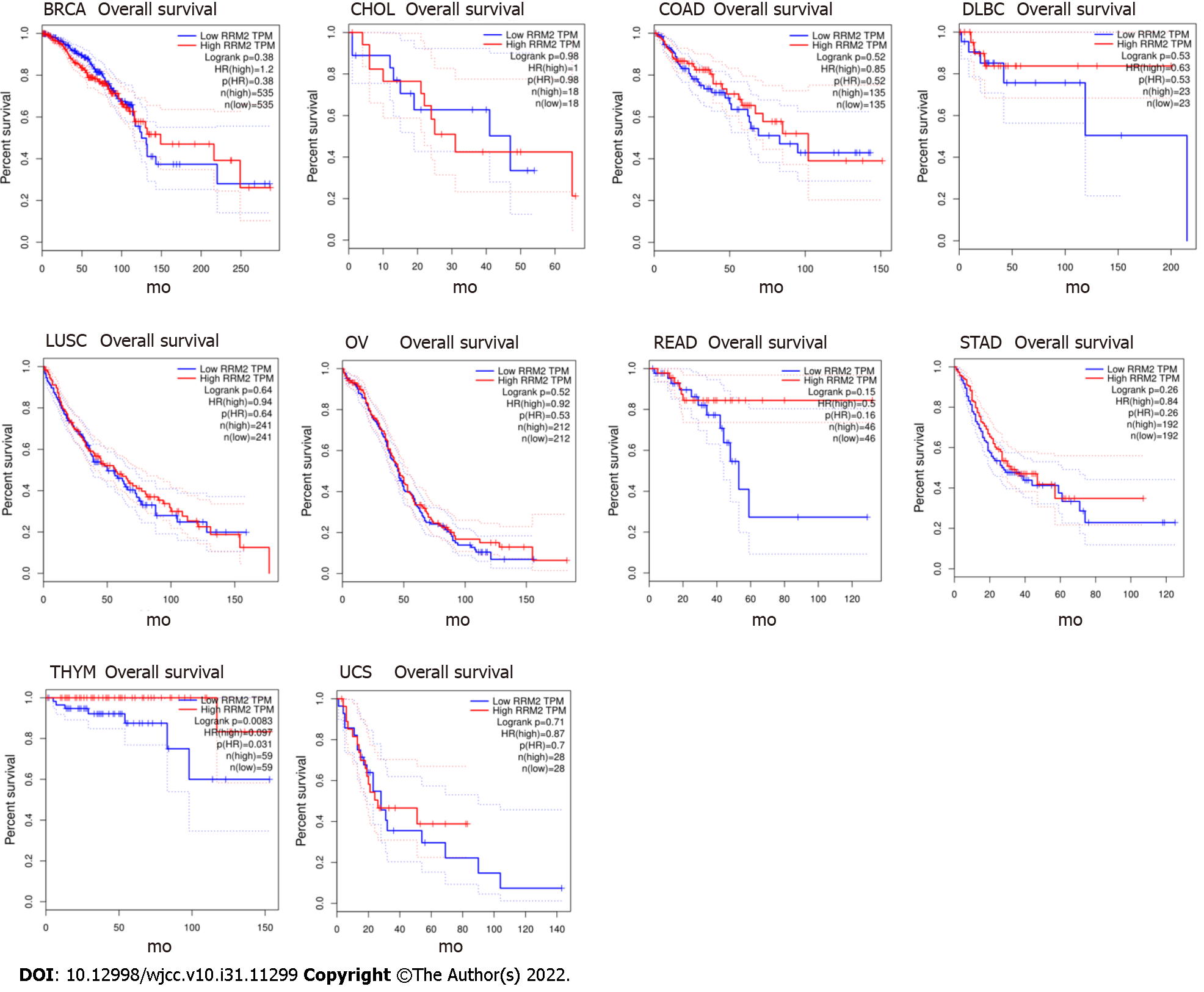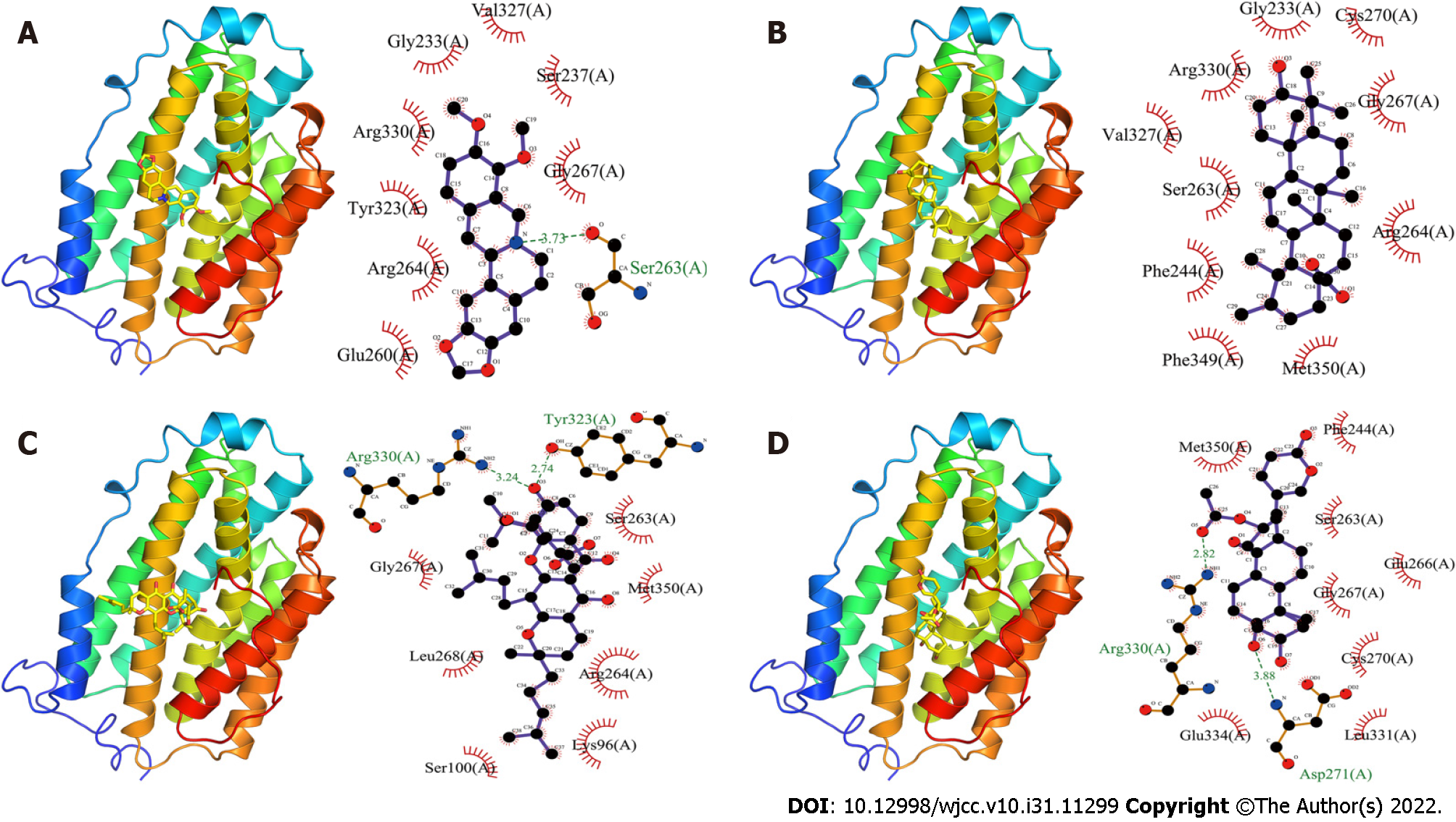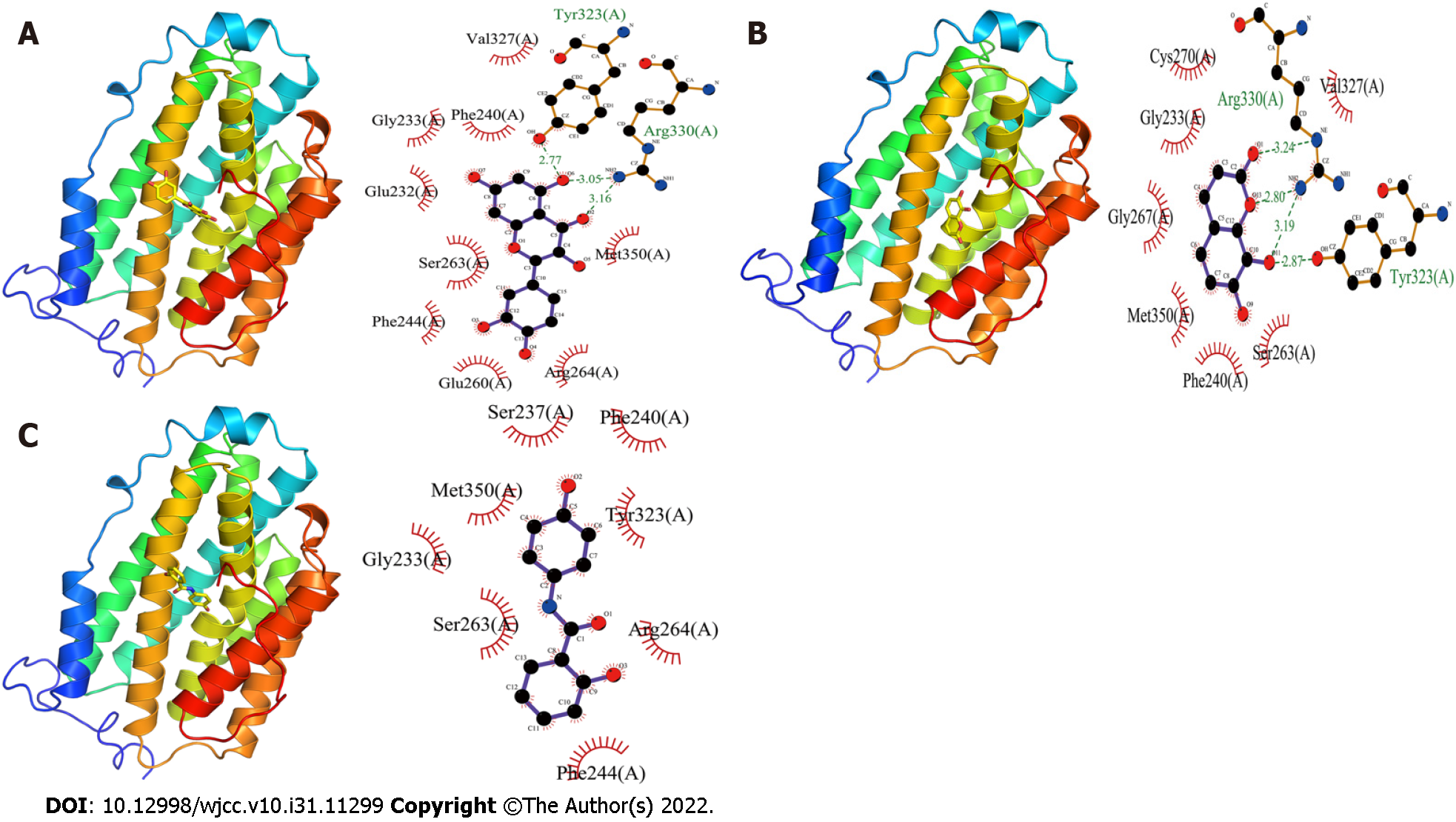Copyright
©The Author(s) 2022.
World J Clin Cases. Nov 6, 2022; 10(31): 11299-11312
Published online Nov 6, 2022. doi: 10.12998/wjcc.v10.i31.11299
Published online Nov 6, 2022. doi: 10.12998/wjcc.v10.i31.11299
Figure 1 The median ribonucleotide reductase M2 gene expression profile across all tumor samples and paired normal tissues (bar plot).
ACC: Adrenocortical carcinoma; BLCA: Bladder Urothelial Carcinoma; BRCA: Breast invasive carcinoma; CESC: Cervical squamous cell carcinoma and endocervical adenocarcinoma; CHOL: Cholangio carcinoma; COAD: Colon adenocarcinoma; DLBC: Lymphoid Neoplasm Diffuse Large B-cell Lymphoma; ESCA: Esophageal carcinoma; GBM: Glioblastoma multiforme; HNSC: Head and Neck squamous cell carcinoma; KICH: Kidney Chromophobe; KIRC: Kidney renal clear cell carcinoma; KIRP: Kidney renal papillary cell carcinoma; LAML: Acute Myeloid Leukemia; LGG: Brain Lower Grade Glioma; LIHC: Liver hepatocellular carcinoma; LUAD: Lung adenocarcinoma; LUSC: Lung squamous cell carcinoma; OV: Ovarian serous cystadenocarcinoma; PAAD: Pancreatic adenocarcinoma; PCPG: Pheochromocytoma and Paraganglioma; PRAD: Prostate adenocarcinoma; READ: Rectum adenocarcinoma; SARC: Sarcoma; SKCM: Skin Cutaneous Melanoma; STAD: Stomach adenocarcinoma; TGCT: Testicular Germ Cell Tumors; THCA: Thyroid carcinoma; THYM: Thymoma; UCEC: Uterine Corpus Endometrial Carcinoma; UCS: Uterine Carcinosarcoma.
Figure 2 The twenty-three types of tumors with a negative correlation between ribonucleotide reductase M2 gene expression and overall survival rate.
ACC: Adrenocortical carcinoma; BLCA: Bladder Urothelial Carcinoma; CESC: Cervical squamous cell carcinoma and endocervical adenocarcinoma; ESCA: Esophageal carcinoma; GBM: Glioblastoma multiforme; HNSC: Head and Neck squamous cell carcinoma; KICH: Kidney Chromophobe; KIRC: Kidney renal clear cell carcinoma; KIRP: Kidney renal papillary cell carcinoma; LAML: Acute Myeloid Leukemia; LGG: Brain Lower Grade Glioma; LIHC: Liver hepatocellular carcinoma; LUAD: Lung adenocarcinoma; PAAD: Pancreatic adenocarcinoma; PCPG: Pheochromocytoma and Paraganglioma; PRAD: Prostate adenocarcinoma; SARC: Sarcoma; SKCM: Skin Cutaneous Melanoma; UVM: Uveal Melanoma; TGCT: Testicular Germ Cell Tumors; THCA: Thyroid carcinoma; UCEC: Uterine Corpus Endometrial Carcinoma.
Figure 3 The ten types of tumors with a positive correlation between ribonucleotide reductase M2 gene expression and overall survival rate.
BRCA: Breast invasive carcinoma; CHOL: Cholangio carcinoma; COAD: Colon adenocarcinoma; DLBC: Lymphoid Neoplasm Diffuse Large B-cell Lymphoma; LUSC: Lung squamous cell carcinoma; OV: Ovarian serous cystadenocarcinoma; READ: Rectum adenocarcinoma; STAD: Stomach adenocarcinoma; THYM: Thymoma; UCS: Uterine Carcinosarcoma.
Figure 4 Berberine/ursolic acid/gambogic acid/cinobufagin and RRM2 protein have binding energy.
A: The molecular docking diagram of berberine with ribonucleotide reductase M2 (RRM2) protein; B: The molecular docking diagram of ursolic acid with RRM2 protein; C: The molecular docking diagram of gambogic acid with RRM2 protein; D: The molecular docking diagram of cinobufagin with RRM2 protein.
Figure 5 Quercetin/daphnetin/osalmide and ribonucleotide reductase M2 protein have binding energy.
A: The molecular docking diagram of quercetin with ribonucleotide reductase M2 (RRM2) protein; B: The molecular docking diagram of daphnetin with RRM2 protein; C: The molecular docking diagram of osalmide with RRM2 protein.
- Citation: Qin YY, Feng S, Zhang XD, Peng B. Screening of traditional Chinese medicine monomers as ribonucleotide reductase M2 inhibitors for tumor treatment. World J Clin Cases 2022; 10(31): 11299-11312
- URL: https://www.wjgnet.com/2307-8960/full/v10/i31/11299.htm
- DOI: https://dx.doi.org/10.12998/wjcc.v10.i31.11299









